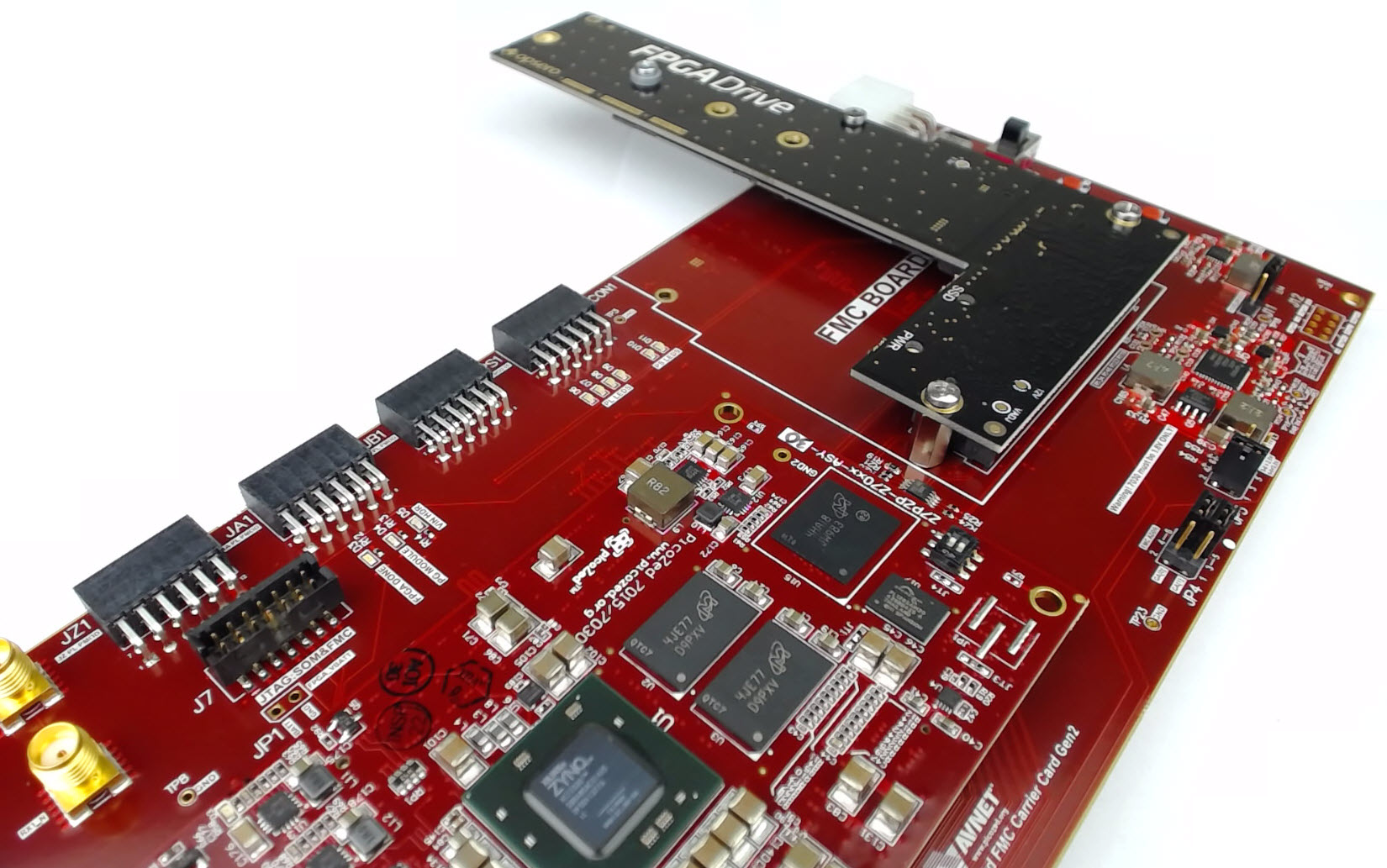Connecting an SSD to an FPGA running PetaLinux

Posted on April 15, 2016
| Jeff Johnson
This is the final part of a three part tutorial series on creating a PCI Express Root Complex design in Vivado and connecting a PCIe NVMe solid-state drive to an FPGA.
Part 1: Microblaze PCI Express Root Complex design in Vivado
Part 2: Zynq PCI Express Root Complex design in Vivado
Part 3: Connecting an SSD to an FPGA running PetaLinux (this tutorial)
In this final part of the tutorial series, we’ll start by testing our hardware with a stand-alone application that will verify the status of the PCIe link and perform enumeration of the PCIe end-points.
[Read More]
Zynq PCI Express Root Complex design in Vivado
Posted on April 14, 2016
| Jeff Johnson
This is the second part of a three part tutorial series in which we will create a PCI Express Root Complex design in Vivado with the goal of connecting a PCIe NVMe solid-state drive to our FPGA.
Part 1: Microblaze PCI Express Root Complex design in Vivado
Part 2: Zynq PCI Express Root Complex design in Vivado (this tutorial)
Part 3: Connecting an SSD to an FPGA running PetaLinux
In this second part of the tutorial series, we will build a Zynq based design targeting the PicoZed 7Z030 and PicoZed FMC Carrier Card V2.
[Read More]
Microblaze PCI Express Root Complex design in Vivado
Posted on April 13, 2016
| Jeff Johnson
This is the first part of a three part tutorial series in which we will go through the steps to create a PCI Express Root Complex design in Vivado, with the goal of being able to connect a PCIe end-point to our FPGA. We will test the design on hardware by connecting a PCIe NVMe solid-state drive to our FPGA using the FPGA Drive adapter.
Part 1: Microblaze PCI Express Root Complex design in Vivado (this tutorial)
[Read More]
FPGA Drive Board Bring-up

Posted on March 31, 2016
| Jeff Johnson
Bring-up of the first FPGA Drive with the Kintex-7 KC705 Evaluation board went nice and smoothly today. In the photo below you’ll see the KC705 and FPGA Drive adapter which is loaded with a Samsung V-NAND 950 Pro. The solid-state drive is an M.2 form factor, NVM Express, 4-lane PCI Express drive with 256GB of storage.
A little intro to NVM Express. NVM Express or NVMe is an interfacing specification for accessing SSDs over a PCI Express bus.
[Read More]
Xilinx reveals Virtex Ultrascale Board for PCI Express applications
Posted on February 23, 2016
| Jeff Johnson
Xilinx just released a video presenting the next-generation of All Programmable devices and dev environments. It’s a quick look at where technology is going and particularly where FPGAs are going to make their mark.
Of particular interest to me were the images of a Virtex Ultrascale PCI Express board at 2:45 in the video. This board appears to have both the PCIe gold-finger edge connector and a PCIe saddle-mount socket connector, so it could be used as either the PCIe end-point or the root complex - or maybe both at the same time.
[Read More]
Comparison of 7 Series FPGA boards for PCIe

Posted on March 12, 2014
| Jeff Johnson
One of my most common customer requests is to speed up execution of a software application using FPGA hardware acceleration. If the application runs on a PC or server, you can achieve impressive performance gains by using off-the-shelf FPGA development boards for PCI Express.
Here is a comparison of the available 7 Series FPGA boards for PCI Express applications:
AC701 Artix-7 KC705 Kintex-7 VC707 Virtex-7 VC709 Virtex-7 $1295 $1695 $3495 $4995 XC7A200T-2FBG676C XC7K325T-2FFG900C XC7VX485T-2FFG1761 XC7VX690T-2FFG1761C 4-lane Gen2 PCIe 8-lane Gen2 PCIe 8-lane Gen2 PCIe 8-lane Gen3 PCIe 1GB DDR3 SODIMM 1GB DDR3 SODIMM 1GB DDR3 SODIMM 4GB DDR3 SODIMM x2 8Kb EEPROM 8Kb EEPROM 8Kb EEPROM 1KB EEPROM No BPI Flash 128MB BPI Flash 128MB BPI Flash 32MB BPI Flash 32MB Quad SPI 16MB Quad SPI 16MB Quad SPI No Quad SPI Flash SD Card slot SD Card slot SD Card slot No SD No LPC FMC 1x LPC FMC No LPC FMC No LPC FMC 1x HPC FMC (*) 1x HPC FMC (*) 2 x HPC FMC 1x HPC FMC (*) 1x SFP 1x SFP+ 1x SFP+ 4x SFP/SFP+ 1GB Ethernet 1GB Ethernet 1Gb Ethernet No Ethernet No USB No USB No USB No USB UART over USB UART over USB UART over USB UART over USB HDMI out HDMI out HDMI out No Video XADC header XADC header AMS port No Analog (*) Note: These HPC FMC connectors are only partially populated which means that they wont be able to support all standard FMCs.
[Read More]


